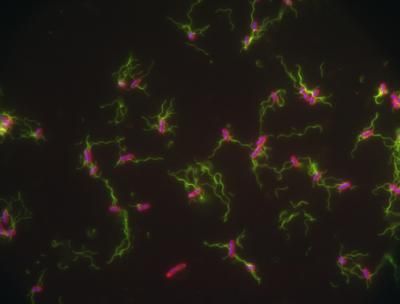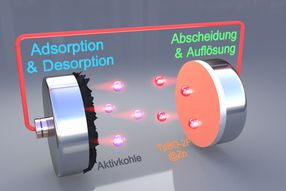NIMR scientists provide insight into the origins of the Aids epidemic
NIMR scientists have uncovered an important clue to understanding the origins of the AIDS epidemic. The work suggests that harnessing natural mechanisms of resistance to HIV infection might provide new methods for combating AIDS.
The research team pinpointed crucial differences in a gene found in rhesus monkeys that can prevent HIV infection, and its human counterpart, that cannot.
The differences indicate that HIV infection would not have become established in the human population if the form of the gene present in certain monkeys had also been present in humans. More importantly, the studies reveal that only a single change to the human gene is needed to enable it to interfere with the replication process of the HIV virus and prevent infection.
Lead scientist, Dr Jonathan Stoye of the Division of Virology, said: "This discovery has significant implications for the development of effective gene therapy to combat AIDS."
"In theory, it should be possible to take cells from an HIV-infected individual, make them resistant to HIV infection with the modified gene and reintroduce them into the patient. These cells could then block progression to AIDS."
"Alternatively we could seek for drugs that activate the human gene against HIV."
According to the latest UNAIDS figures, at the end of 2004, 39.4 million people worldwide - 37.2 million adults and 2.2 million children younger than 15 years - are living with HIV/AIDS.
The research findings are published in full in:
Yap, M.W., Nisole, S. and Stoye, J.P. (2005). A single amino acid change in the SPRY domain of human Trim 5α leads to HIV-1 restriction. Current Biology 15: 73-78
Other news from the department science
Most read news
More news from our other portals
See the theme worlds for related content
Topic world Gene therapy
Genetic diseases once considered untreatable are now at the center of innovative therapeutic approaches. Research and development of gene therapies in biotech and pharma aim to directly correct or replace defective or missing genes to combat disease at the molecular level. This revolutionary approach promises not only to treat symptoms, but to eliminate the cause of the disease itself.

Topic world Gene therapy
Genetic diseases once considered untreatable are now at the center of innovative therapeutic approaches. Research and development of gene therapies in biotech and pharma aim to directly correct or replace defective or missing genes to combat disease at the molecular level. This revolutionary approach promises not only to treat symptoms, but to eliminate the cause of the disease itself.
























































